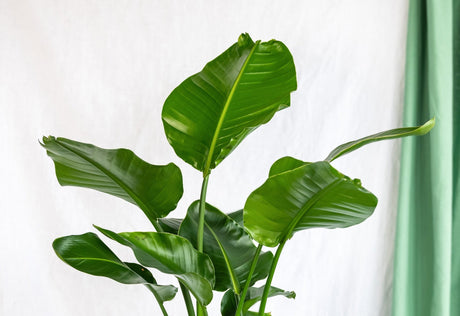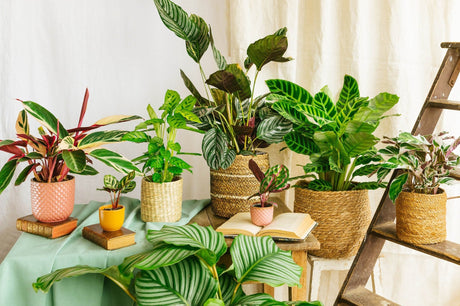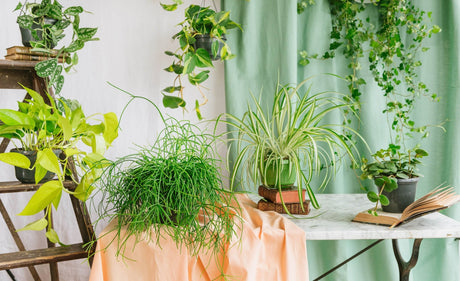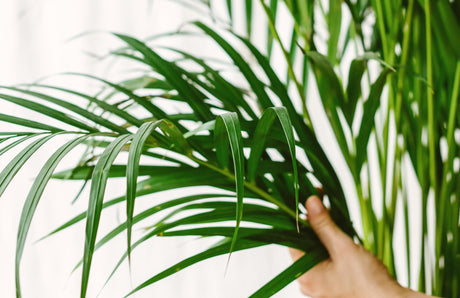
In this article you will find all our tips for taking care of your plants in summer, we will discuss various topics including watering, exposure, temperature and humidity. Water and light are two fundamental elements for our friends the plants as well as for their development because this is what will allow them to be nourished, however a good dosage is necessary for their balance. Depending on the periods and depending on temperature and ambient humidity, their needs will change resulting in a period of adaptation.
1. Watering
Due to the high temperatures, summer temperatures, increasingly long days, the water needs of plants will also be revised upwards. This is mainly due to the fact that the water will evaporate and be absorbed more quickly by its roots, the plant will therefore need a more regular supply of water. The best way to know if a plant lacks water is to touch the soil with your fingers and see if it is dry or not, knowing that during this period the potting soil must always remain moist. We recommend watering 3 to 4 times a week for the most water-intensive (such as calatheas) otherwise every 15 days for more resistant (like succulents and cacti) always at room temperature and non-calcareous rainwater.
We tend to think that it doesn't really matter when or what time we water our plants, as long as we water them, but in fact it does! And we explain why. Awatering your plants in the evening or at night promotes the development of diseases such as root rot or other bacteria or fungi, this phenomenon mainly occurs due to lack of light. The plant will continue to receive water all night, but it will not be able to absorb what it already has.During the day and especially thanks to the light, the plant will be able to more easily and quickly absorb the water that will reach its roots, keeping it healthy and avoiding any risk of mould.Favor watering in the morning before 10 a.m., the air is then cooler and the soil too, which reduces evaporation and therefore your plants benefit more from the water you apply.
We tend to think that it doesn't really matter when or what time we water our plants, as long as we water them, but in fact it does! And we explain why. Awatering your plants in the evening or at night promotes the development of diseases such as root rot or other bacteria or fungi, this phenomenon mainly occurs due to lack of light. The plant will continue to receive water all night, but it will not be able to absorb what it already has.During the day and especially thanks to the light, the plant will be able to more easily and quickly absorb the water that will reach its roots, keeping it healthy and avoiding any risk of mould.Favor watering in the morning before 10 a.m., the air is then cooler and the soil too, which reduces evaporation and therefore your plants benefit more from the water you apply.
If you're away for a long time, leave with peace of mind by using an oya, which will allow you to water your plants continuously and gradually .

2. Exposure
The recommended exposure for most plants is a light exposure without direct sun, in fact contact with direct sun could burn the foliage. To remedy this, it is therefore advisable to move your plants away from the window so that they are not exposed to direct sunlight. Regarding the orientation and where to place them, it all depends on your interior, for a north-facing interior we will favor plants that can tolerate dark spaces such as Dracaena , pothos, asparagus, pilea. for a south-facing interior with lots of light and sun, cacti, succulents, ficus are suitable.
Never forget that the sun rotates, so be sure to turn your plant periodically to prevent it from leaning toward the light.
Even when you go on vacation, don't close your windows or shutters because your plants won't survive without light.
Even when you go on vacation, don't close your windows or shutters because your plants won't survive without light.

3. Temperature and humidity
In summer, our houses and apartments will tend to have a lower humidity level than the rest of the year, which is why in addition to watering, it is strongly recommended to spray the foliage of your plants using a spray bottle to prevent them from suffering too much from the drought. Especially concerning tropical plants such as ferns or calatheas which are accustomed by their native environment to living in a very high humidity level between 77% and 88%. Spraying your plants also helps to dust your plants which allows them to breathe better.Finally, as for watering, it is strongly recommended to use rainwater or non-calcareous water.Misting once a day remains ideal to provide all the humidity they need. Just like the basinage (where we "soak" the aerial parts of the plant in a bucket or a basin) which also makes it possible to temporarily increase the humidity around the plant.

For more tips and extend your experience, read our complementary blog posts on plant care in summer:
Author: Mathilde, expert La Green Touch






